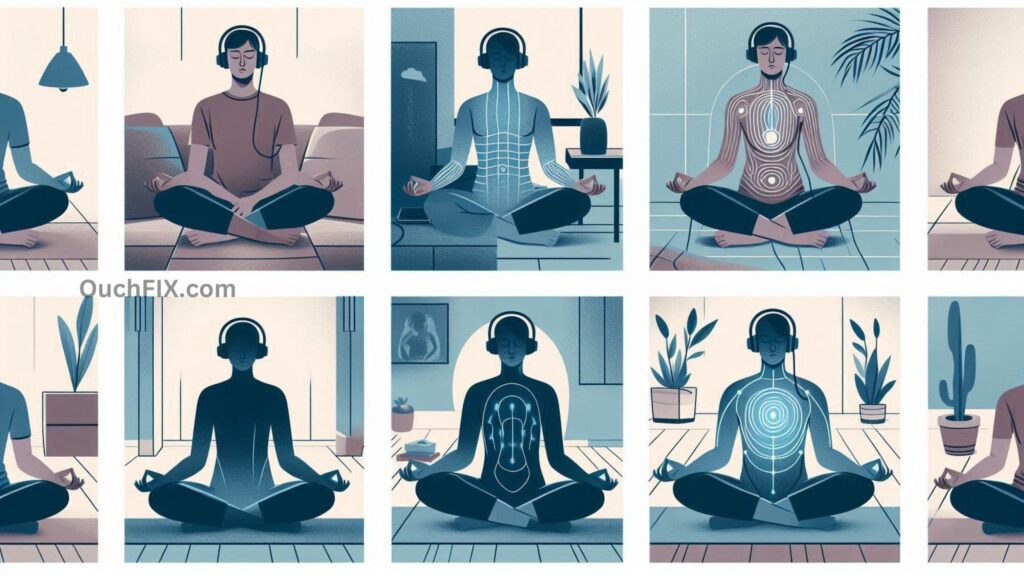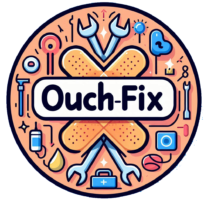When pain strikes, the last thing you might want to do is slow down, breathe deeply, or sit quietly. Yet meditation—a simple, free, and research-backed practice—can actually help you manage pain more effectively. The best part? The “side effects” are positive: deep relaxation, reduced stress, and even improved sleep.
How Meditation Eases Pain
“Meditation is basically about focusing on the present moment,” explains Trisha Miller, LPCC, a licensed professional clinical counselor. While meditation won’t instantly erase pain, it helps you stay calm and observe what’s happening in your body without panic or frustration.

Pain often triggers stress, which in turn amplifies discomfort. Meditation interrupts this cycle by helping the nervous system relax. When you accept discomfort rather than resist it, your body can release tension and increase its tolerance for pain.
Additionally, meditation stimulates the release of endorphins, the body’s natural “feel-good” hormones, which can reduce pain naturally. Studies show mindfulness practices can even change how the brain processes pain signals, making them feel less intense over time (source).

Also Read: What Affordable Ergonomic Products are Best for Home Use?
Types of Meditation That Help with Pain
No single meditation style works for everyone. Experimenting with different approaches can help you find what feels best for your body and mind. Here are several types known to ease pain:

- Mindfulness Meditation: Focus on your breath and stay present in the moment. Ideal for learning to observe pain without judgment.
- Body Scan Meditation: Progressively tune into different parts of your body, noticing sensations and releasing tension.
- Guided Imagery: Visualize calming scenes or positive outcomes to distract the mind from pain.
- Transcendental Meditation: Repeat a calming mantra to reach deep relaxation.
- Qigong or Yoga: Combine gentle movements with mindful breathing for holistic relief.
“All types of meditation can help with pain,” Miller says. “Try different styles and see what feels right for you.”
How to Meditate Through the Pain
Meditation doesn’t need to be elaborate. Forget candles, incense, or chanting if that’s not your style. The essentials are simple: a quiet spot and a comfortable position.

Here’s how to get started:
- Find a comfortable spot: Sit, lie down, or lean against a wall—whatever is most comfortable.
- Focus on your breath: Take slow, deep breaths, noticing the inhale and exhale.
- Observe sensations: If you feel pain, acknowledge it without judgment. Picture it as a wave passing through your body.
- Redirect your focus: When your mind wanders, gently return to your breath or mantra.
- Set a timer: Start with 5 minutes and gradually work up to 15–20 minutes per session.
Regular meditation strengthens your ability to manage discomfort, reduces stress, and enhances overall resilience.

Also Read: How can Yoga Help in Maintaining Wellness and Reducing Aches?
Start Small and Build Up
Consistency matters more than duration. Here’s how to make meditation a part of your routine:

- Start with 5 minutes: Use a timer or guided meditation app.
- Practice a few times a week: Gradually increase frequency and duration.
- Combine with other therapies: Mindfulness can complement massage, acupuncture, or gentle exercise.
- Track your progress: Note changes in pain levels, mood, and sleep patterns.
Even short sessions can improve your response to pain and reduce stress over time.
Bottom Line
Meditation isn’t a magic cure for pain, but it’s a powerful tool for managing discomfort and improving quality of life. It’s free, easy to try, and requires minimal equipment—just a quiet space and a few minutes of your time. Over time, consistent practice can help you respond to pain with calm, rather than frustration.
Q1. Can meditation completely eliminate pain?
No, meditation doesn’t cure pain, but it helps reduce perception and emotional response to discomfort.
Q2. How long should I meditate for pain relief?
Start with 5 minutes daily and gradually increase to 15–20 minutes. Consistency is key.
Q3. Is one type of meditation better than another for pain?
Not necessarily. Mindfulness, body scan, guided imagery, and gentle movement practices all work—experiment to see what fits you best.
Q4. Do I need special equipment?
No. A quiet spot and a comfortable chair, pillow, or mat are enough. Optional items include blankets, cushions, or essential oils.
Q5. Can meditation be combined with other treatments?
Yes. Meditation complements massage, acupuncture, yoga, and other therapies. Discuss with your healthcare provider for a holistic plan.




